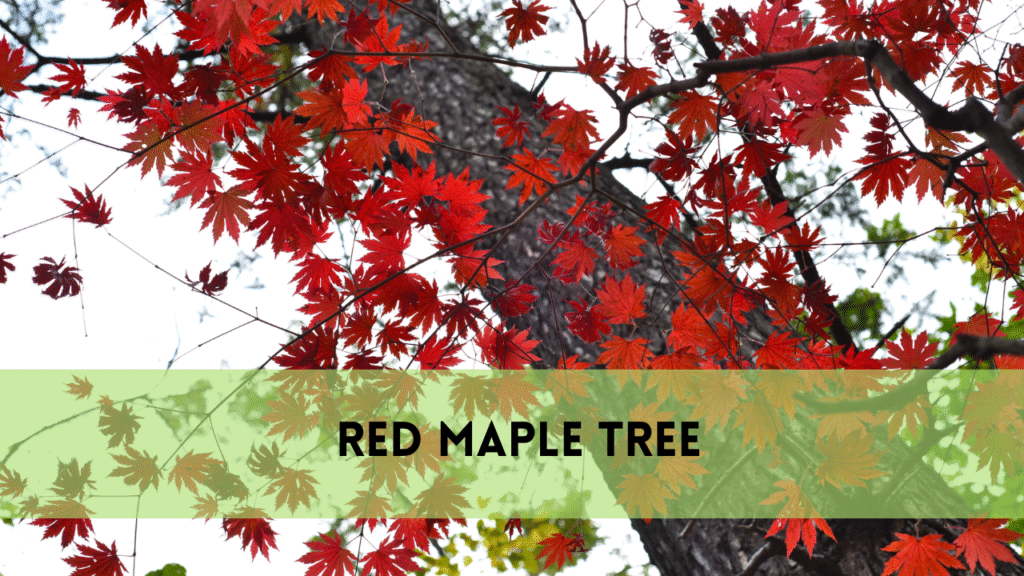The the red maple plant is considered to be one of nature’s most beautiful masterpieces. With its fiery crimson-colored leaves in autumn, and its the ability to adapt, it’s no surprise that the tree is a popular choice by landscapers, gardeners, and those who love nature. If you’re planning to plant it in your yard, or just admiring its beauty The red maple tree has more than just aesthetics. It’s a durable, low-maintenance plant that is able to thrive in a variety of conditions.
This article will look at the characteristics of the red maples perfect growing conditions as well as seasonal changes and the numerous benefits it can bring to homeowners and ecosystems.
Why the Red Maple Tree Stands Out
Few trees are as enthralling as those of the Red Maple tree. The scientific name is Acer rubrum the tree is indigenous to North America and is celebrated for its rapid growth rate and spectacular seasonal changes.
Vibrant Foliage Through the Seasons
The most impressive aspects in the Red Maple tree’s appearance is its constantly changing leaves. In spring tiny red flowers bloom before giving way to a lush green leaves during summer. The real spectacle begins in the fall when the leaves turn into vibrant shades of orange, scarlet and yellow. This spectacular display is an absolute highlight in any setting.
Adaptable and Hardy
In contrast to other species that can be finicky The red maple can thrive in a variety of soil types, from swampy, wet places to well-drained urban environments. Its versatility is a good choice for homeowners looking for an easy-care, yet beautiful tree.
Planting and Caring for a Red Maple Tree
If you’re considering bringing the maple tree to your landscape and you’ll be pleased to learn that it’s fairly easy to cultivate. Here’s what you should be aware of:
Choosing the Right Location
Red maple trees like the full sun or partial shade. Although they can tolerate a variety of soil types, they thrive in moderately acidic and humid environments. Do not plant them in areas near driveways or sidewalks because their roots may often spread out.
Watering and Maintenance
Young red maples require regular watering to build solid roots. When they mature, they’re drought-resistant. Pruning is required only to get rid of dead or crossed branches, and should be done in the late winter, before the new growth starts.
Common Pests and Diseases
Luckily it is extremely resistant to insects. However, you should keep watch for scale insects, aphids and verticillium wilt. Regular inspections and proper care will ensure your tree’s health for a long time.
The Ecological Benefits of a Red Maple Tree
Beyond its stunning beauty the Red Maple tree has a crucial part in the local ecosystems.
Wildlife Haven
Birds, squirrels and pollinators rely on red maple tree to provide sustenance and protection. The seeds (samaras) can be a food sources for animals, and its lush foliage can provide nesting places.
Air Quality and Shade
Like all species of trees, the red Maple tree helps improve the quality of air by absorption of carbon dioxide and release of oxygen. The broad canopy creates shade that cools, thus reducing costs for energy during summer.

Seasonal Changes: A Year in the Life of a Red Maple Tree
A red maple tree’s move through the seasons as if you are witnessing a live artwork.
Spring: A Burst of Red Blooms
Spring is the time to bring little red flowers among early signs that there is spring following winter. The blooms draw bees and other pollinators, promoting biodiversity.
Summer: Lush Green Canopy
In summer the red maple is adorned with lush green leaves, providing shade and a stunning background in any yard.
Fall: The Grand Finale
Autumn is the time when the maple tree shines in its red. The leaves change into bright red creating an amazing scene that draws the attention of anyone who comes across it.
Winter: Elegant Silhouette
Even in winter the red maple tree’s robust, branching structure gives visual interest to barren landscapes.
Landscaping with a Red Maple Tree
If it is employed as an accent or as an element of a larger garden The red maple tree adds a touch of elegance to the outdoor area.
Standalone Specimen Tree
When planted on its own in a garden, a mature red maple tree is an ideal centerpiece, particularly in parks or large yards.
Group Plantings for Impact
For an impressive effect, plant several red maple trees in a group. In autumn, their contrasting colours create stunning views.
Urban and Suburban Settings
Due to its tolerance to pollution Due to its tolerance to pollution, the red maple is a great option for urban parks, streetscapes, as well as residential areas.
Myths and Facts About the Red Maple Tree
Despite its ubiquity, there are some myths are associated with this species.
Myth: Red Maple Trees Are Weak
Although some maples are hard wood however, the red maple is fairly sturdy when it is maintained.
Fact: They’re Fast Growers
In contrast to oaks that grow slowly the red maple tree can increase their height by 1-2 feet in the right conditions.
Conclusion: Why the Red Maple Tree Deserves a Spot in Your Landscape
Red maple isn’t just a pretty appearance. It’s also resilient, sustainable and beautiful addition to any setting. No matter if you’re a veteran gardener or just a new planter, this species provides elegance, shade and durability with minimal effort.
If you’re in search of an evergreen tree that provides interest and also supports wildlife in the local area The red maple tree is a great option. Plant it now and take pleasure in its beauty for the generations to come.
FAQs
How fast will the red maples develop?
Red maple will grow around 1-2 feet each year, under ideal conditions.
Does a Red Maple be able to withstand soil that is wet?
Yes! the red maples thrive on wet soils, and sometimes even in flooded ones.
What is the ideal timing to begin planting a Red Maple?
Spring or autumn in the early months is ideal for allowing roots to establish prior to severe weather.
Do the red maple trees infest roots?
The roots of these plants can spread, so be careful not to plant too near to roads or structures.
How long will the red maple tree survive?
With the right care the red maple tree will live between 80 and 100 years, or longer.
Conclusion: Why the Red Maple Tree Deserves a Spot in Your Landscape
Red maple isn’t just a pretty appearance. It’s also resilient, sustainable and beautiful addition to any setting. No matter if you’re a veteran gardener or just a new planter, this species provides elegance, shade and durability with minimal effort.
If you’re in search of an evergreen tree that provides interest and also supports wildlife in the local area The red maple tree is a great option. Plant it now and take pleasure in its beauty for the generations to come.



